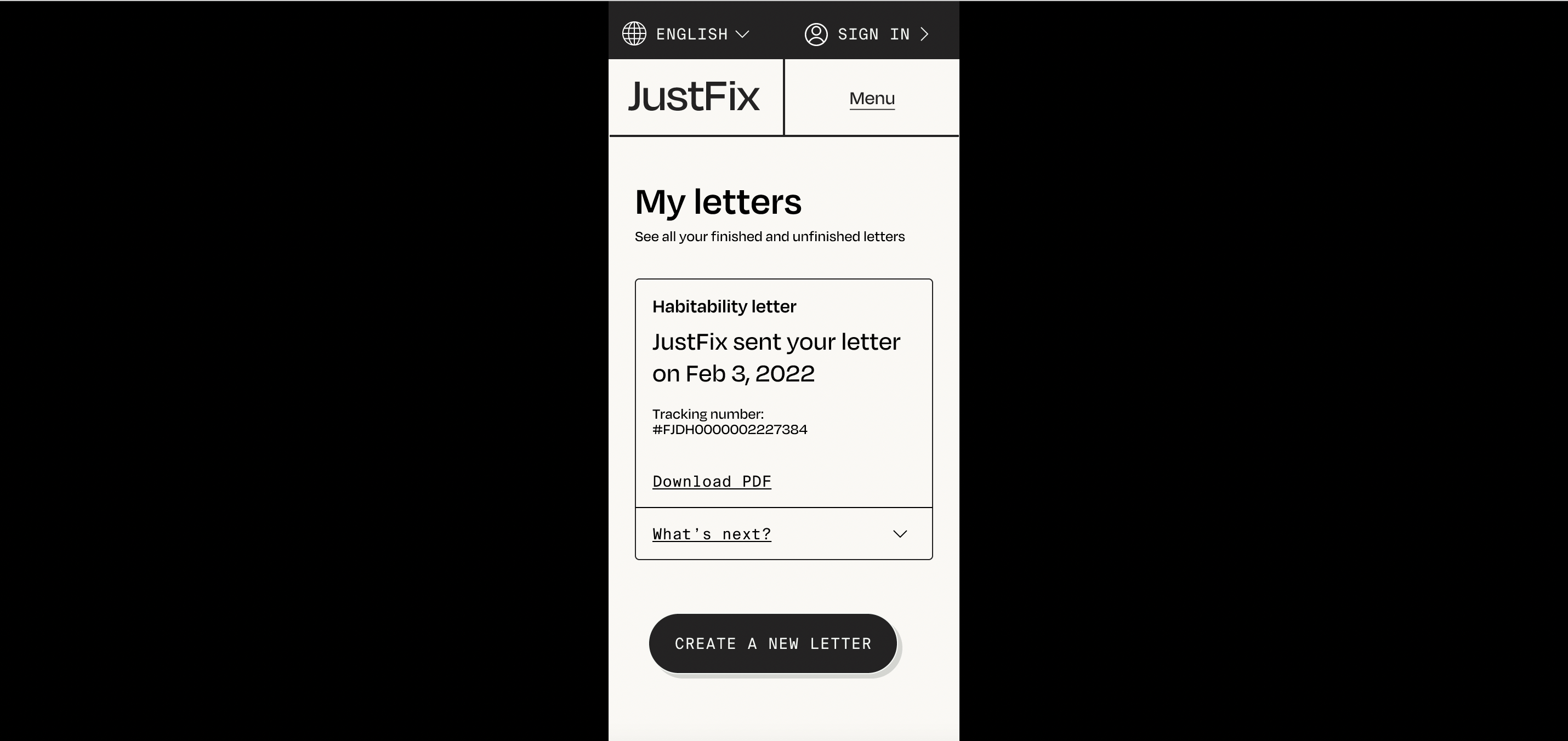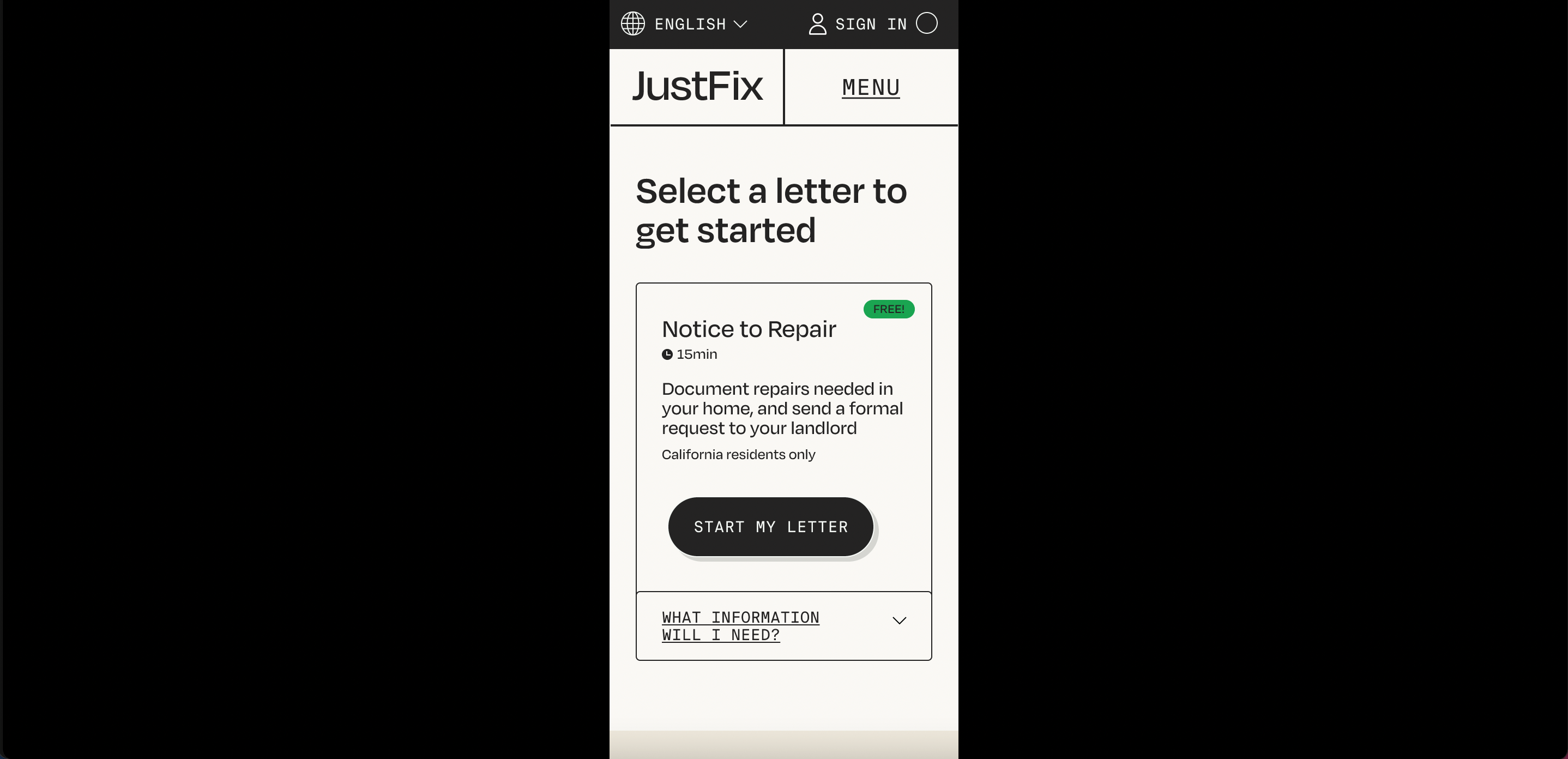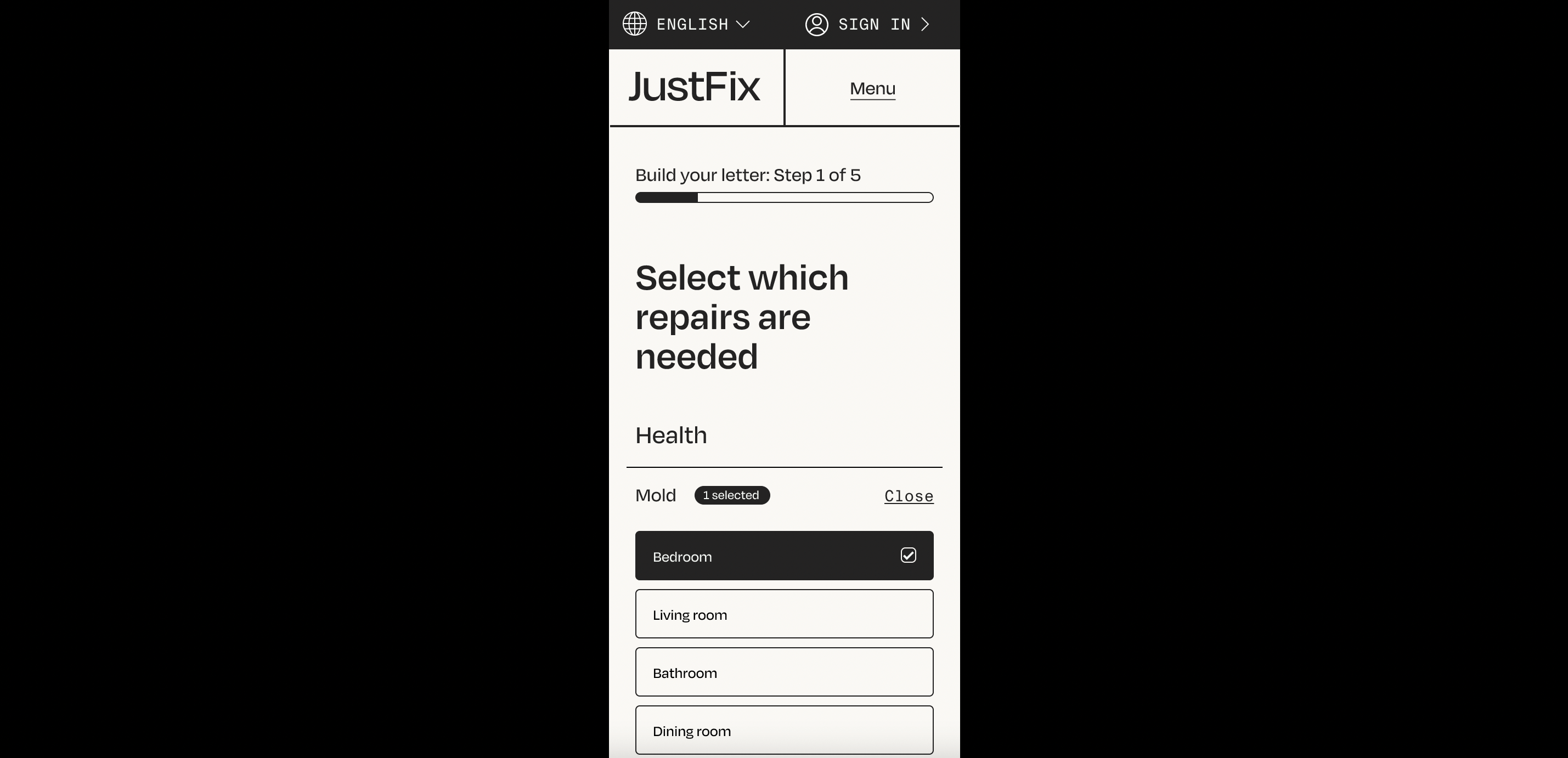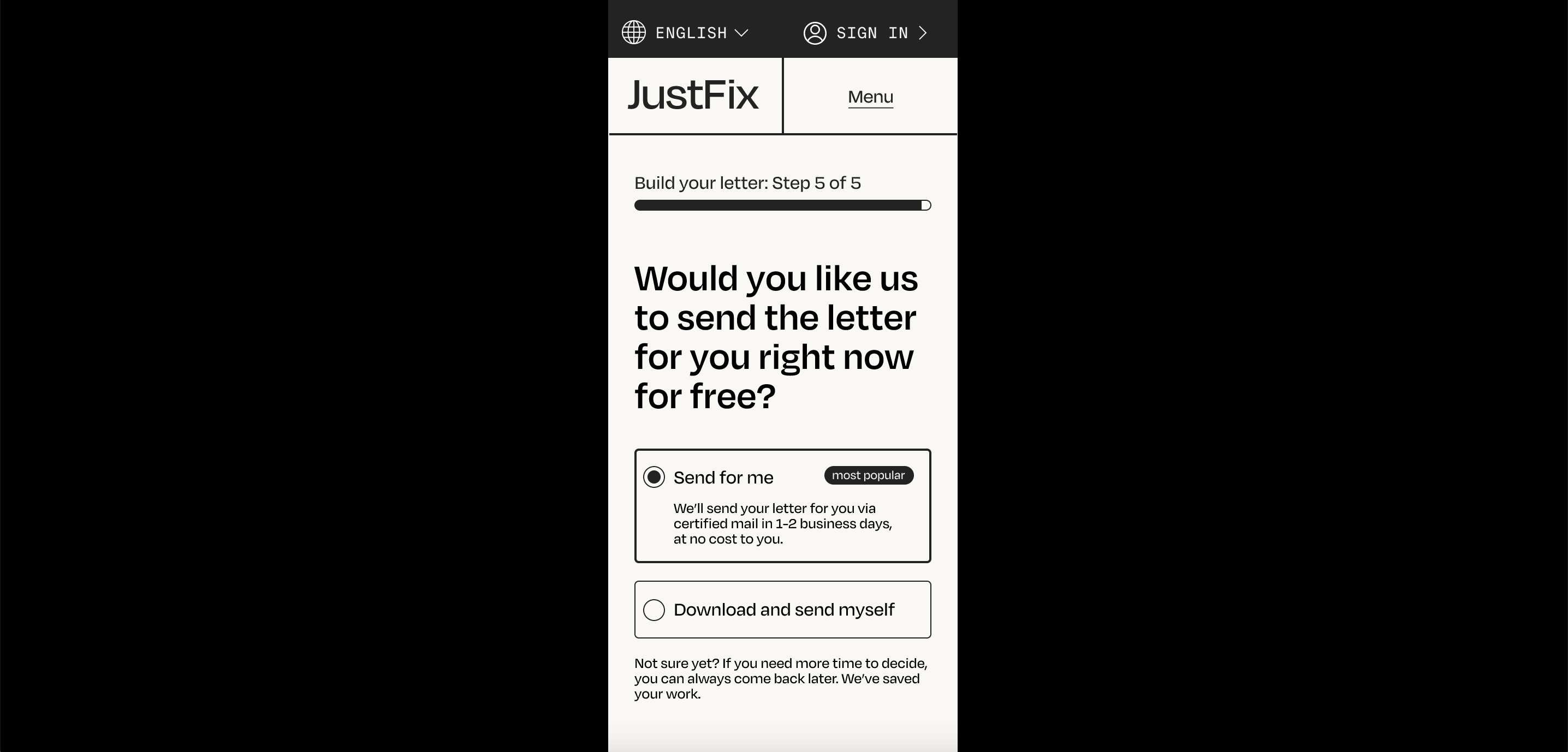Background
Access to safe, affordable housing is an ongoing battle in the US, especially for the most vulnerable members of society. The team at JustFix believes housing is a human right, and that technology and open source data can be leveraged to help tenants better understand and fight for their rights. From October 2021 to June 2022, I was contracted to design what is now the LA Tenant Action Center.
Brief
Create a tool to help Los Angeles based tenants understand their rights, and hold their landlords responsible for providing a healthy, safe home.
My role
- As the primary UX/UI designer on the project, I was responsible for all design deliverables leading up to delivery. (Note: A full-time designer was hired toward the end of my contract, who now owns the product’s design. We worked together on content review and modifications, finessing high fidelity designs, and QA and accessibility testing.)
- I worked closely with the organization’s Lead Designer to help roll out a new design system, by stress testing new patterns and contributing back some of my own.
- I co-lead user research thorough the project alongside the product manager.
- And although I’m by no means a housing expert, I often found myself owning the content design by writing first drafts of copy based on research, and facilitating content reviews.
Process
Getting to know the users and housing justice domain
Other than reading a couple books and news articles about housing inequality, this was my first deep dive into the housing justice domain. Our small product team worked closely with an LA-based partner organization, SAJE, through the duration of the project—the resulting tool would aid them in their tenant support. These folks were our collaborators, subject matter experts, and main stakeholders. They work side by side with tenants in LA to help coach them through their existing housing problems as well as organize for overall housing reform.
As-is scenario
Prior to the pandemic, SAJE held weekly meetings at their office for tenants to come learn about their rights and get one on one advice for their specific problems. Oftentimes, SAJE staff would recommend writing a letter to the landlord so they could have documentation of the problem, and give the landlord an opportunity to fix it before escalating to the housing department. SAJE has forms and templates available for tenants to fill out, but historically, tenants may not follow through—they may not have access to a printer, or a way to get to the post office. By redesigning this experience to be a self-service letter builder, we were able to
- Offer tenants free sending and tracking of their letter
- A way to save their progress, or return back to access previously sent letters
- Step by step guidance that mimics the support of a housing expert, allowing SAJE staff to focus energy on other organizing projects
- Empower tenants to solve their own problems, in the spirit of organizing

Who are our users?
- Mostly Latinx folks who are monolingual Spanish speakers
- Generally older folks who feel more comfortable with technology when they have the assistance of family members or SAJE staff
- Primarily access content on their smart phones; may not own a personal computer
What are they feeling?
- Hesitant (and even fearful of speaking up) in case their situation is made worse
- Frustrated with unresponsive or unprofessional landlord
- Concerned about the safety and security of themselves and their family
To determine the requirements of the project, we spoke with 5 members of SAJE staff, 2 local tenants, and 1 housing rights lawyer. I facilitated an affinity mapping exercise to help us as a product team decide on the requirements for the project going forward.
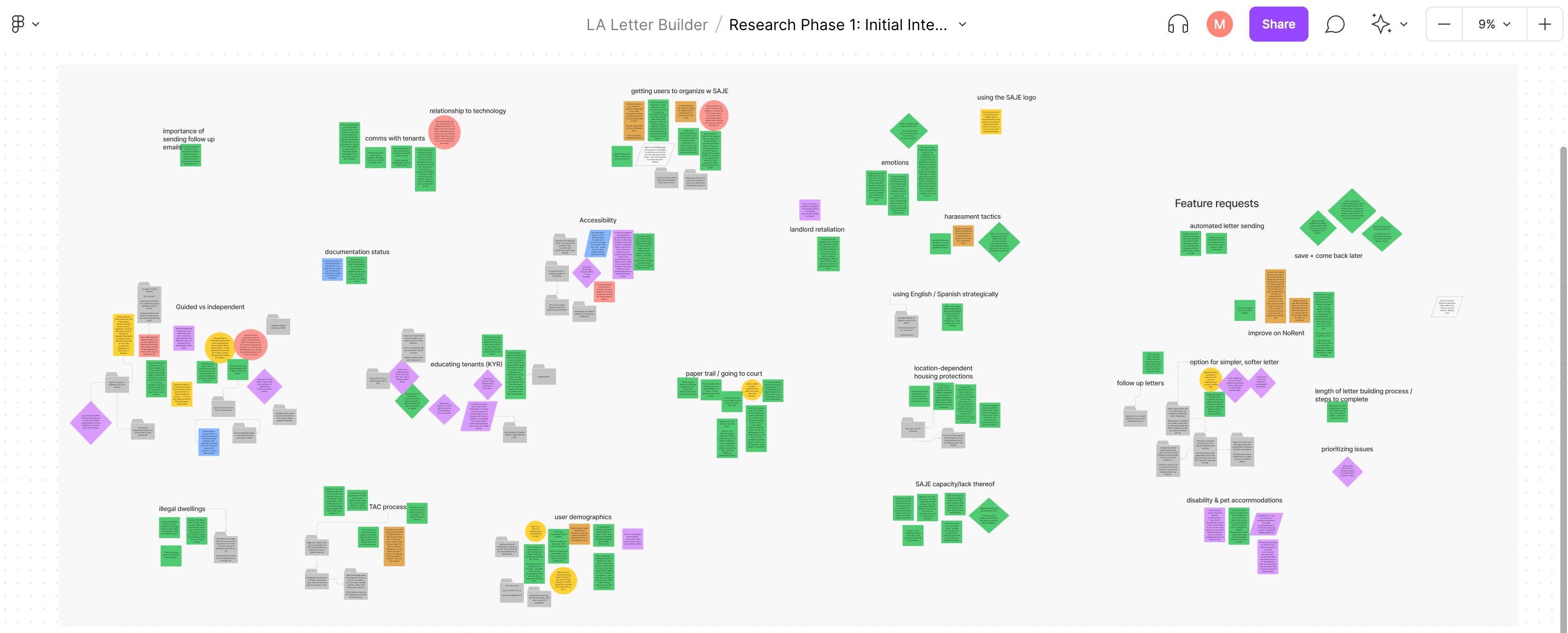
Rapid Iteration
Paper prototyping
Based on the agreed upon requirements, I started off the design process by creating a paper prototype that covered the end to end experience at a high level. I created the prototype with many resources in mind — considering one of JustFix’s existing letter building tools so we could maintain brand alignment, considering what’s working well in the existing SAJE letter building experience, and bringing to the forefront the various sentiments expressed in the initial round of research. This early stage prototype became a conversation starter with our partners, so we could align on the overall intention of the tool, and see if this met their expectations, both for tenants and for their organization.

I also created an audit of existing JustFix tools, to ensure we were aligned as much as possible, reusing components, and only deviating when we had a strong reason to.
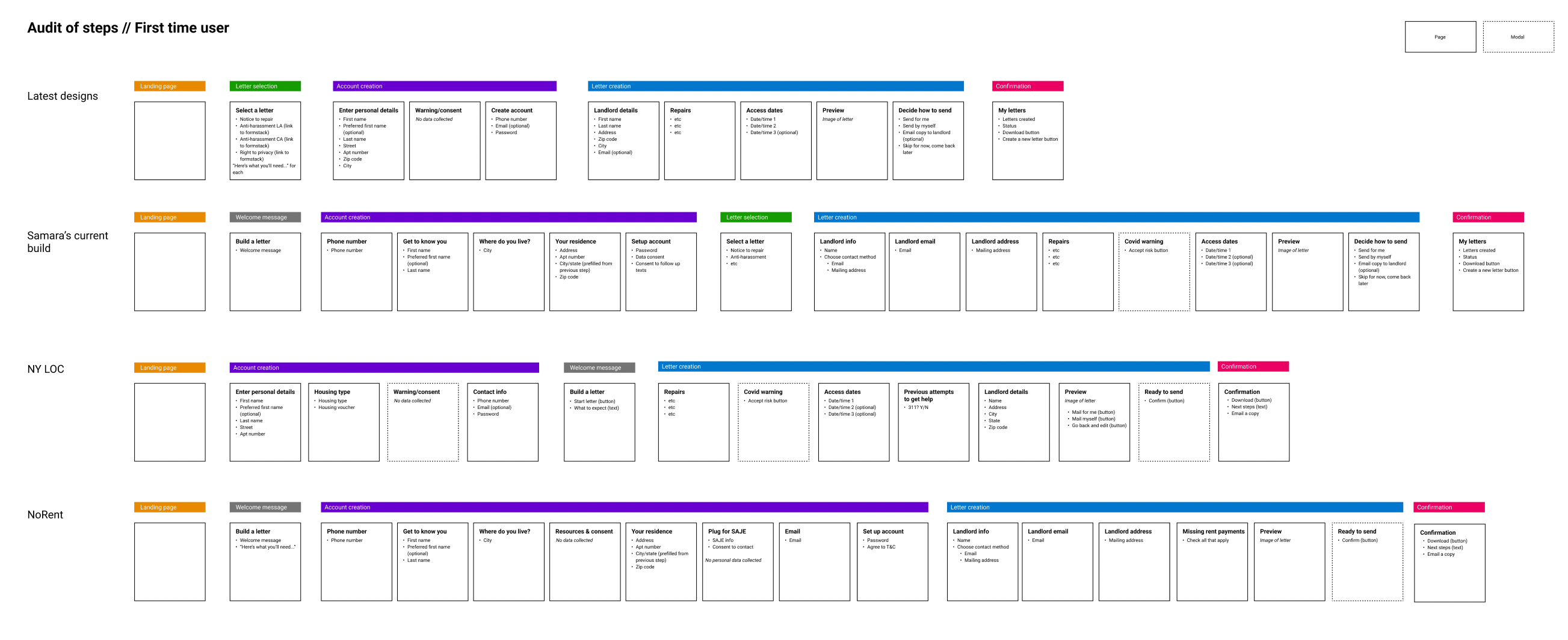
Filling in the gaps using mid-fidelity designs
After aligning on expectations for the experience, I then started to zoom into each part of the experience and work out the experience in more detail—sometimes on my own, other times in working sessions with the product manager.
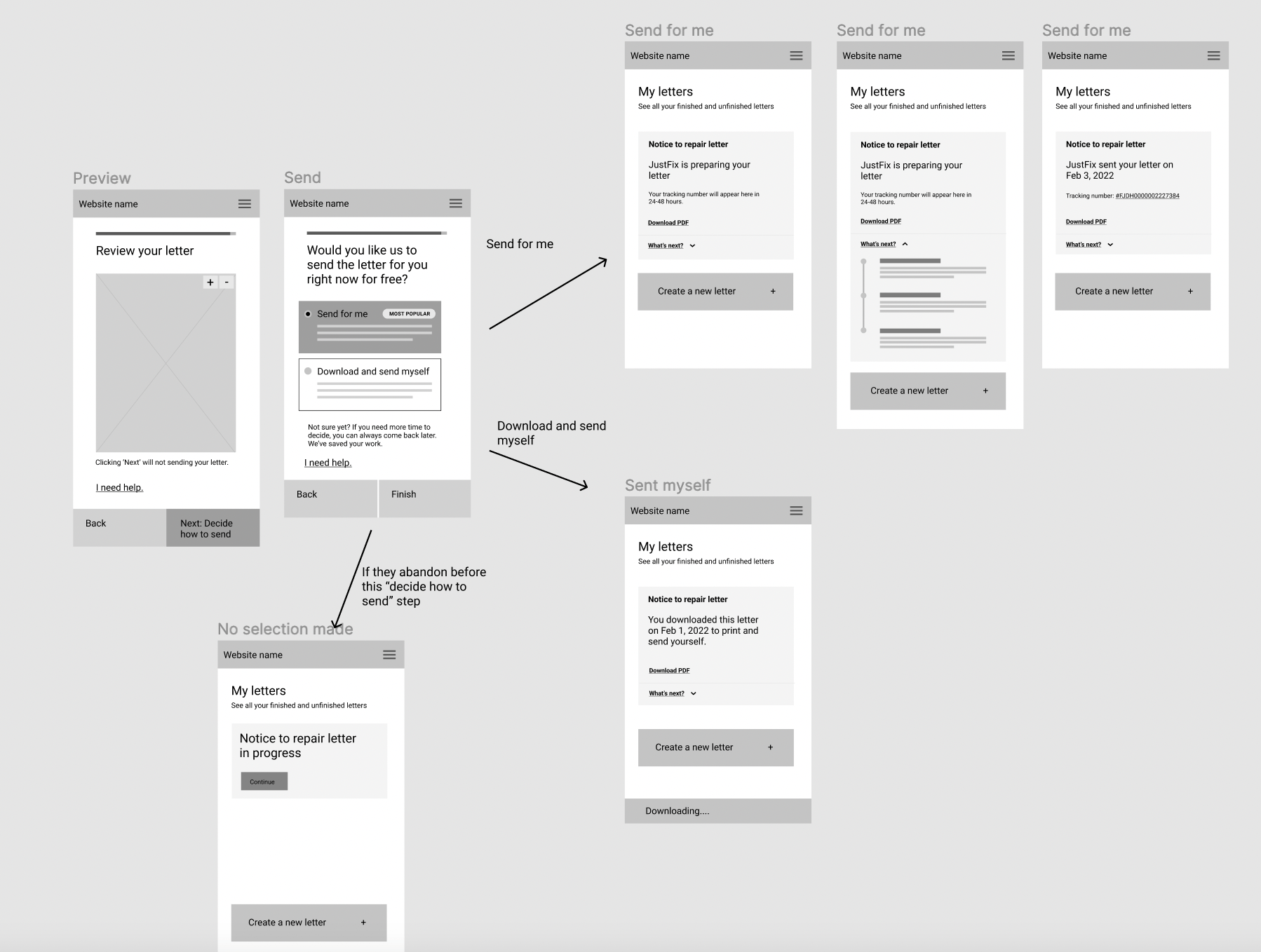
Implementing and contributing to the new design system
During my contract, JustFix was in the process of a rebrand, including an overhaul of their design system. This product would be the first to start implementing parts of the new design system. Working with the lead designer of JustFix, I stress-tested some new patterns and principles she created, and contributed back some of my own.
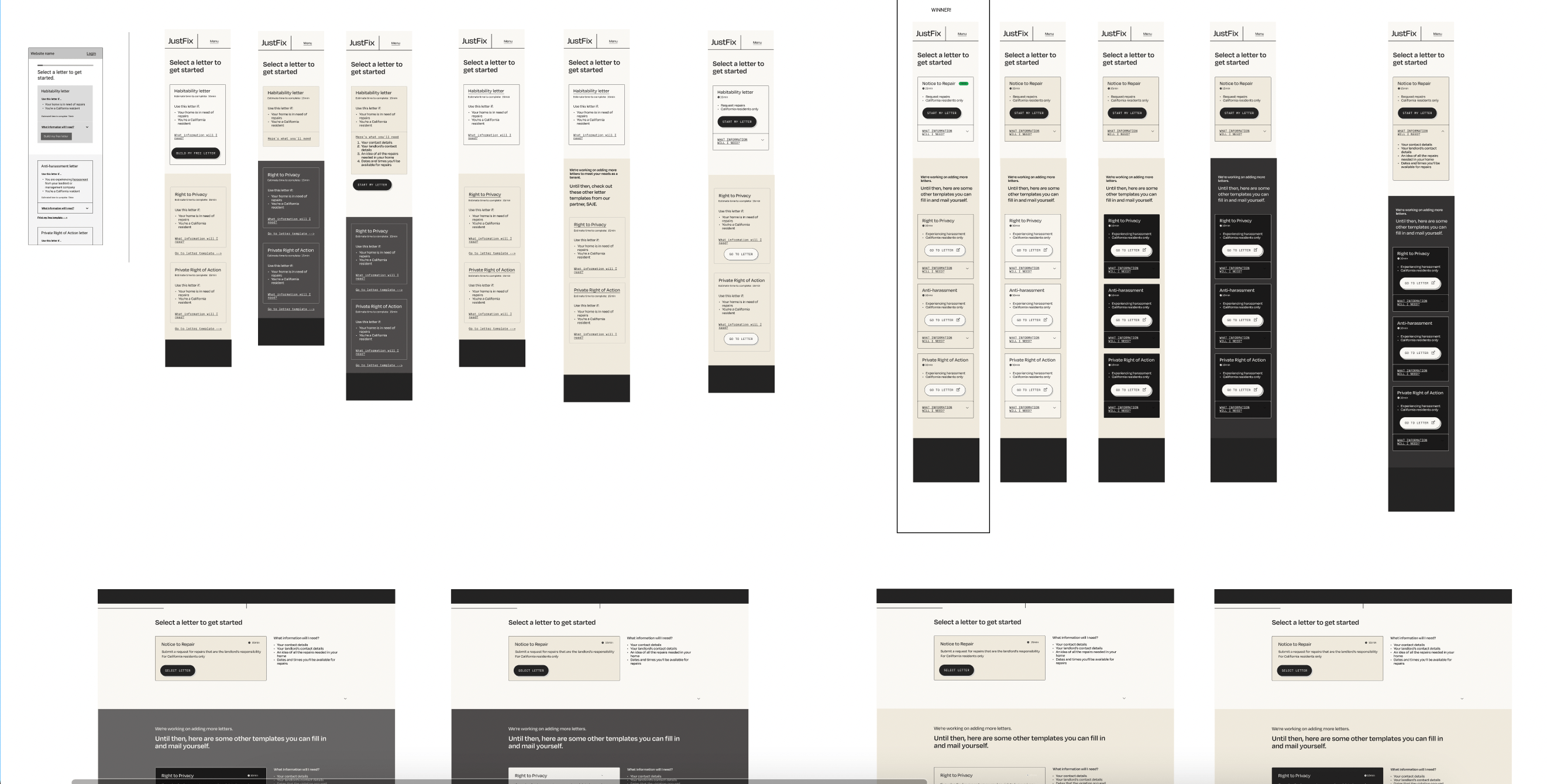
Testing with focus groups
Once we had a working prototype, our partners at SAJE offered to organize focus groups of local tenants to help us get early feedback on the tool. We ended up hosting 5 focus groups in total: 2 English speaking, 2 Spanish speaking, 1 with SAJE staff. I learned valuable skills in working with an interpreter and facilitating sessions in a language I am not fluent in. The focus groups gave us important feedback about where users needed more guidance, what was working well, and what features to scrap altogether.
Some key takeaways include:
- Tenants need more clarity on when a letter is finalized and can no longer be edited.
- While many tenants want to customize their letter and provide more detail, this actually goes against best practices, so we must find a way to communicate this adn reassure the user.
- Tenants need more guidance on next steps after sending a letter.
Naming the product
As we were getting close to release, I teamed up with JustFix’s Program Manager to help figure out the name of the product. Together, we designed and conducted a series of working sessions with all team members from both JustFix and SAJE, to understand everyone’s expectations and ideas for the tool’s name. This was an opportunity to practice co-creation in a way that makes everyone feel heard and valued, while still taking on ownership and responsibility for decision making.
My teammate and I used the information from the working sessions to create a “top 5” list of names, that were then sent to both organizations for anonymous voting. The winner: LA Tenant Action Center both describes the intent of the tool and aligns with SAJE’s long running weekly event called Tenant Action Clinic. Win, win!

Accessibility review
In my previous roles at IBM, I admittedly did little accessibility testing—we had teams of engineers and QAs who own those tasks. With a small team like JustFix, I had the opportunity to roll up my sleeves and take on this responsibility. My newly hired design partner introduced me to ways of testing. I tabbed my way through our tool, opening tickets for unexpected behavior, and also used VoiceOver to test on my android, while she used a screen reader for her iPhone. During my last week on the team, I helped to prioritize these tasks for engineering.
Final designs
This product was launched in September 2022 🎉
Personal highlights
- I’d worked on many side projects at IBM related to causes I cared about but this was my first time working for a nonprofit.
- I learned the importance of language equity, while designing a tool for Spanish speakers.
- Never had I interviewed folks who had been through such tough life experiences. Folks opened up to me and shared some really difficult stories. I’m grateful for their vulnerability and their trust, and I did my best to show respect and offer as much support as I could. I’m proud of how I handled these situations.
